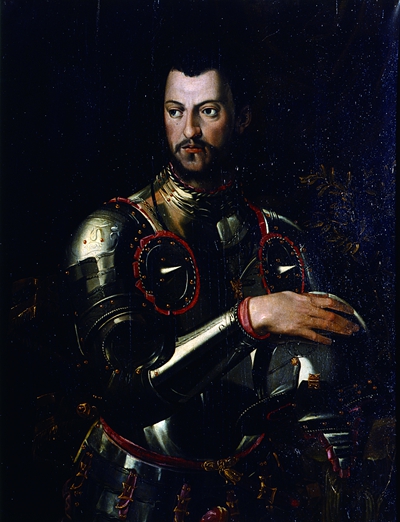
Portrait of CosimoI Bronzino manner 16th century Oil on canvas Gallerie degli Uffizi, Florence
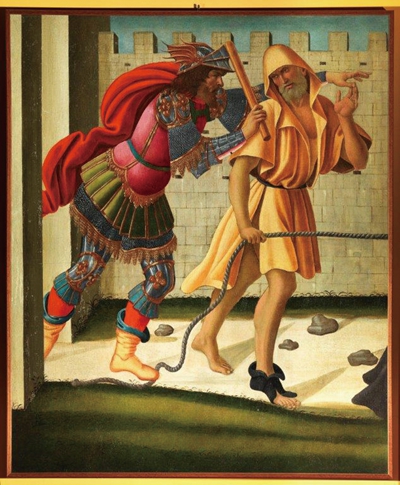
The Procession to Calvary Sandro Botticelli (1445·1510) and workshop Early 16th century
Oil on canvas Gallerie degli Uffizi, Florence
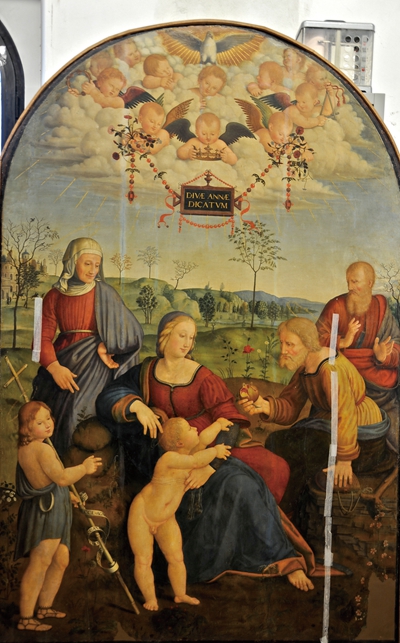
Holy Family with St. Anna Domenico Alfani (Perugia, c. 1480·after 1553) 1510
Mixed technique on wood Galleria Nazionale dell’Umbria, Perugia
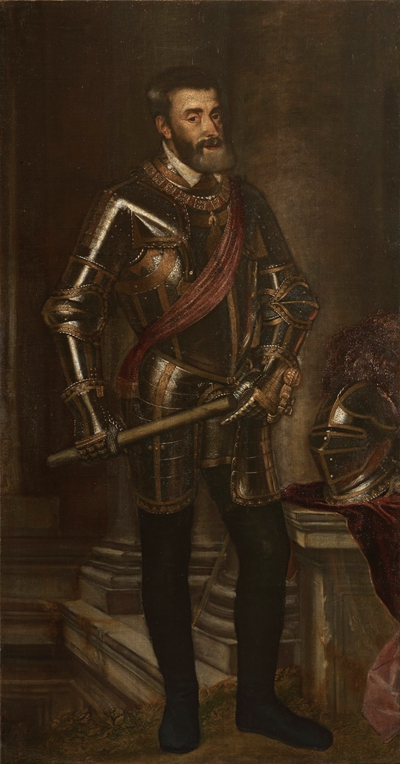
Portrait of Charles V in Armour Tiziano Vecellio and workshop 16th century
Oil on canvas Gallerie degli Uffizi, Florence
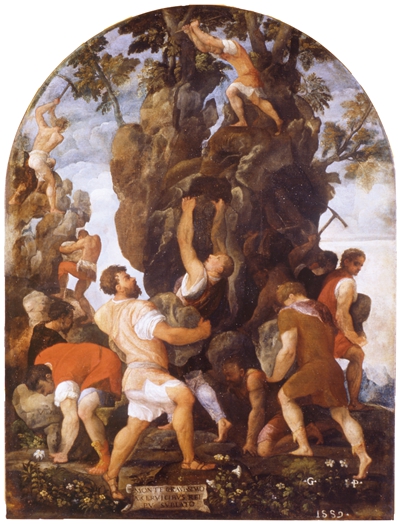
Allegory of Monte Nuovissimo Vitruvio , called VitrulioBuonconsiglio
(documentated between 1523 and 1573) 1559
Oil on canvas Gallerie dell’Accademia di Venezia
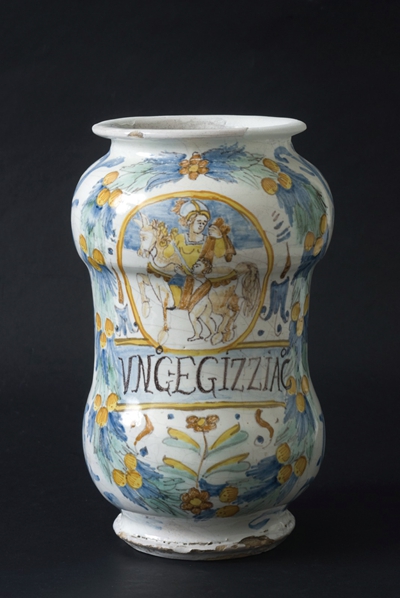
Albarello (pharmacy jar) Deruta Style 17th century
Majolica Galleria Nazionale dell’Umbria, Perugia
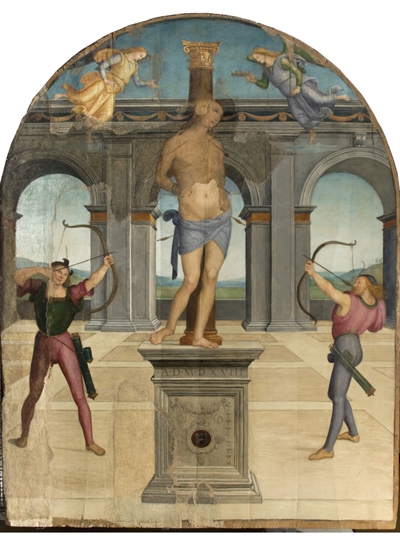
Martyrdom of San Sebastiano Pietro Vannucci, called Perugino (1450·1523) 1518
Tempera on wood Galleria Nazionale dell’Umbria, Perugia
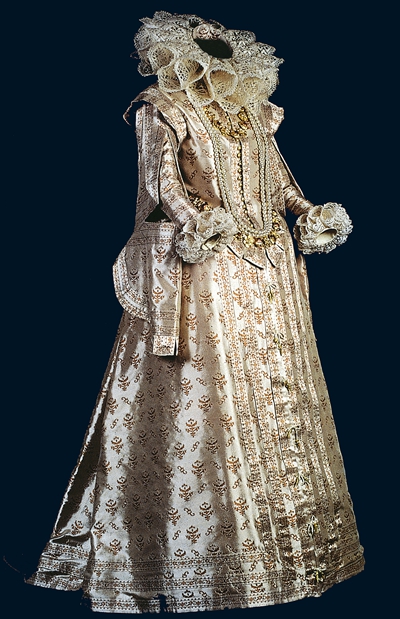
Costume of Eleonora de’ Medici 21th century Textile King Studio Italy
A few hundred years ago, the Renaissance movement that began in Florence, Italy, opened a new era in the history of Western civilization. Engels once said: "The Renaissance is a great, progressive change that humans have never experienced before. It is an era of giants under great demand---a giant with versatility and knowledge in terms of thinking ability, passion and character."How was the art, life and thought of Italy during the Renaissance? From March 27th to June 22nd, the Exhibition of Italian Art, Culture and Life in Renaissance held at the Capital Museum will answer questions for the audiences.
The exhibition, organized by MiBACT, State Administration of Cultural Heritage and Beijing Municipal Administration of Cultural Heritage and undertaken by the Capital Museum, is under the framework of the China-Italy cultural cooperation mechanism, the " Sleeping Beauty of Italian Museum" project. According to HUANG Xueyin, event curator from Chinese side and Deputydirector of Capital Museum: "the character of the event is to organize the themed exhibition after the selection of collections of sleeping exhibits of Italian museums.Most of the exhibits in this event are in China for the first time."
Some 102 pieces of exhibits from 17 museums and institutions in Italy,such as Uffizi Gallery, Bargello National Museum, Umbria National Art Museum, etc., are of extremely high diversity, not only including paintings by a large group of artists such as Tiziano, Botticelli, Perugino, Tintoretto and Palma, but also badges, clothing, daily necessities, building components and models, presenting a panoramic view of Renaissance Italian art, culture and social life."Very different from the Renaissance exhibitions that we have seen in China, the focus of this event is to lead viewers to understand why these artworks were created, how they were used and interpreted." Huang Xueyin said.
The exhibition is divided into three modules: "Tradition and Innovation," "Human is the Center of the Universe", "Art and Faith". "From the level of art to the life to the spirit, the three units are progressive. Other exhibitions concerning the Renaissance are from the perspective of art appreciation and famous masterpieces. The second and third part of the exhibition show more content about people’s daily life, spiritual outlook and ideas."According to ZHANG Jihua, who is responsible for exhibition content. Meanwhile, to help the audiences gain a deeper understanding of the meaning of the Renaissance movement, in addition to Renaissance exhibits, they will also find ancient Roman sculptures and a small amount of Byzantine paintings. ZHANG Jihua said: "The reason why nonrenaissance works were chosen was to visualize the link between the renaissance and ancient Greece and ancient Rome more intuitively, that is, to extract the essence of classical culture and to innovate the medieval traditions."
The "Tradition and Innovation" module mainly reflects the profound changes that have taken place in the fields of Italian painting, architecture and urban planning from the Middle Ages to the Renaissance.By contrasting with Byzantine style paintings, people can clearly grasp the artistic innovations of this period. In addition, some paintings are employed to demonstrate the changes in architectural style during this period.
The "Human is the Center of the Universe" module interprets a major feature of this era, which is to emphasize the value of peoplethrough a large number of portraits. Leonardo Da Vinci's sketch Uomo Vitruviano is the most intuitive expression of this idea. According to the original manuscript, the exhibition produced a special device for the audience to take pictures for comparison in order to deepen their understanding.At the same time, Tiziano and his studio's exclusive surviving working Portrait of Charles V in Armour was just repaired completely before the show.The unit also shows the charm, wedding scenes and villas of the Medici family members through paintings and architectural models, allowing the audiences to approach the Medici family, one of the key promoters of the Italian Renaissance.
The "Art and Faith" module shows people’s state of mind at that time.During the Renaissance, art slowly but steadily developed in the direction of secularization. The artist introduces real life into religious paintings, in which the sacred characters are rendered more human.The artists borrowed classical art forms to express religious themes. Several ancient Roman sculptures are deliberately selected in the exhibition to illustrate this phenomenon. In addition, it also witnesses paintings of such secular themes as classical mythology and ancient Roman history emerged during this period.
The audiences will understand Italian Renaissance culture and art more intuitively and truthfullythrough these collections. "This exhibition is not just an appreciation for admiration. It is through the art and life of the Renaissance to show people’s life style at that time so as to realize the purpose of paralleled admiration of civilization of the traditional Chinese culture." said HUANG Xueyin.














